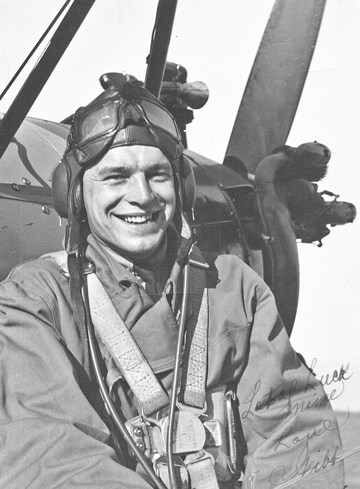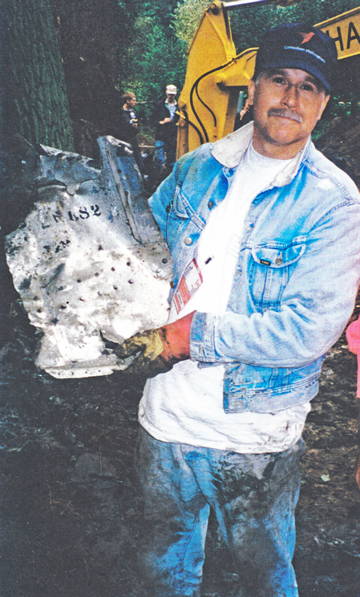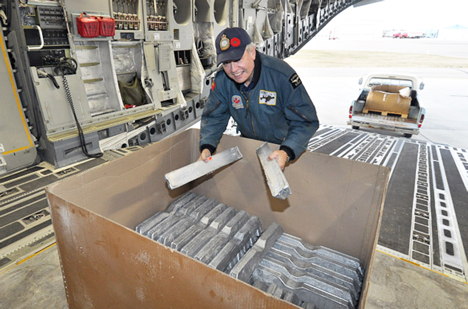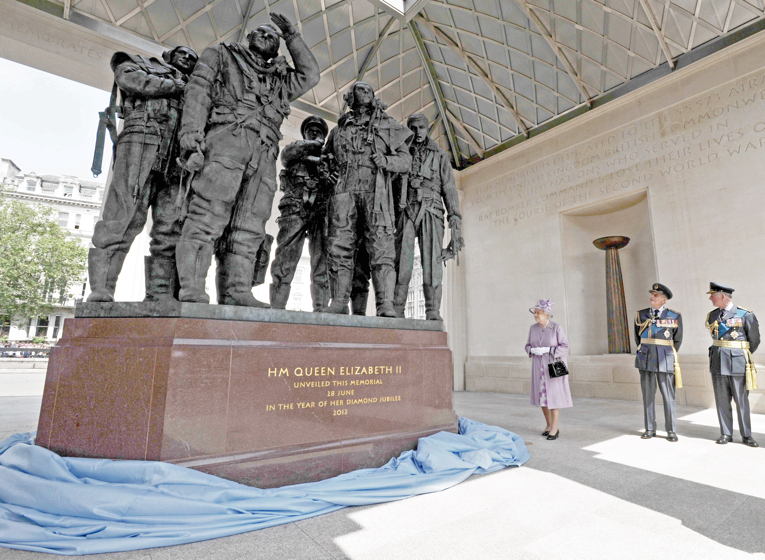 Bomber Command
Bomber Command  |
Aircrew Chronicles
|
Aircrew Losses
|
Nose Art
|
BCATP
|
Lancaster
|
Media
|
Aircrew Chronicles
|
Aircrew Losses
|
Nose Art
|
BCATP
|
Lancaster
|
Media
 Bomber Command
Bomber Command  |
Aircrew Chronicles
|
Aircrew Losses
|
Nose Art
|
BCATP
|
Lancaster
|
Media
|
Aircrew Chronicles
|
Aircrew Losses
|
Nose Art
|
BCATP
|
Lancaster
|
Media
 Wib Benz during pilot training. |
F/O Wilbur Bentz's 426 Squadron RCAF Halifax was shot down in 1944, forgotten for fifty years, and then recovered in 1997. The aluminum from the aircraft was acquired by the Bomber Command Museum of Canada. In 2012 the aluminum became the ceiling of the Bomber Command Memorial in London. P/O Wilbur "Wib" Bentz was born in North Bend, B.C. and received his wings at Brantford, Ontario in April, 1943. On the evening of 12 May, 1944 P/O Bentz piloted 426 Squadron RCAF Halifax LW682 (OW-M) on a raid to Leuven, Belgium. The aircraft was attacked by a Messerschmitt Bf-110 flown by Luftwaffe ace, Martin Drewes. It crashed into a marsh and exploded, killing all eight aboard. Because of the boggy ground, very little from the aircraft could be recovered and only five bodies were located. Within 24 hours the remains of the aircraft other crewmembers sank into the marsh with Halifax LW682.
|
|
After coming across his uncle's letters, Jay Hammond, visited the site and realized that his uncle's remains were right below his feet. Under the sponsorship of 426 Sqd. Association, Karl Kjarsgaard of Canada's Halifax 57 Rescue recovered Halifax LW682 with the assistance of the Belgian Aviation History Association. The team recovered the remains of the three Canadians that were still in the aircraft, P/O Bentz, Sgt. J.W. Summerhayes, and Sgt. F. Roach. Their families attended the burial of the airmen who were interred next to their five crewmates. The recovered aircraft parts were transported to Canada and some were used in the restoration of Halifax NA337 now on display at Trenton, Ontario. The unused aluminum was melted and formed into ingots. The ingots were acquired by the Bomber Command Museum of Canada and placed in storage to be used for memorial purposes.  Karl Kjarsgaard at the museum with the ingots. |
 Jay Hammond with aluminum from Halifax LW682. |
|
The museum offered the ingots to the Bomber Command Association in the U.K. on behalf of all of Canada as a unique contribution to the Memorial to the aircrew of Bomber Command that they were designing. The museum delivered 850 pounds of the aluminum to Lethbridge and loaded it aboard a 429 Squadron RCAF C-17 transport that flew the ingots back to Trenton and then to the U.K. In 2012 The Bomber Command Memorial was Dedicated in London by the Queen to honour the airmen of Bomber Command, 55,573 of whom lost their lives. The design of the ceiling of the 8.5 metre tall pavilion at the focal point of the Memorial was inspired by the geodetic construction used in the Vickers Wellington bomber. The aluminum panels that cover the Wellington geodetic pattern roof supports were formed from the aluminum from P/O Bentz' RCAF Halifax LW682 that was provided by the Bomber Command Museum of Canada. |
 Loading the ingots onto the RCAF C-17. |
